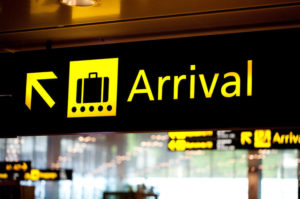US refugee intake falls off a cliff
The number of refugees arriving in the US crashed to a six year low in March when just 2,070 entered the country following the executive order signed by President Trump to reduce the refugee intake from 110,000 to 50,000 this financial year.
The intake rose in April to 3,200 but it was still much lower than the months preceding Trump’s order.
An executive order signed by Trump in January decreased the refugee limit from 110,000 to 50,000 this fiscal year.
Although the order has been blocked in the US Federal Court, this did not happen until mid-March, causing the State Department to rein in monthly arrivals.
 The boss of one of the US’ largest resettlement organisations the Immigration and Refugee Program for Church World Service slammed the situation as damaging.
The boss of one of the US’ largest resettlement organisations the Immigration and Refugee Program for Church World Service slammed the situation as damaging.
“This program simply can’t be turned on and off like a faucet,” said Erol Kekic.
Many approved refugees have had their travel documents expire during the interim, forcing them to restart the whole process and leaving them in limbo.
Conservatives in the US have praised the decrease but insist a total halt in admissions is necessary.
Refugee groups say the drop has forced them to lay off employees while trapping thousands of people in war-torn nations, overflowing refugee camps and dangerous living conditions amid the world’s largest refugee crisis in modern history.
At the same time, Republican-controlled state legislatures have been doing their part to limit the flow of refugees into their states.
Tennessee recently followed other states in suing the federal government to ban refugees in its state, and more than a dozen states have withdrawn from the federal resettlement program.
Texas recently became the largest state to withdraw from the program, and its Legislature is now moving to abolish the state’s Office of Immigrant and Refugee Affairs.
But withdrawing from the program and abolishing the offices are merely symbolic gestures, since non-profits are now tasked with coordinating refugee admissions.
But officials in Republican controlled states say they hope to put pressure on the federal government to keep its anti-resettlement fight.
“I think it would be a good idea to have a time-out on the whole resettlement program,” said Texas state Senator Don Huffines.
“We’ve got to keep Texas safe,” he said.
The US resettlement process provides more stringent background checks than any other mode of entry in the country, and there is no evidence that refugees are more likely to commit violent acts.
According to analysis conducted by the Cato Institute, a libertarian policy think tank, the chance of an American being murdered by a refugee in a terrorist attack is just 1 in 3.64 billion per year.
The legal challenges returned the refugee cap number to 110,000, but the slowdown from January to March and actions in Congress mean the US will likely come nowhere close to reaching that number by the end of the US’ financial year which ends in October.
The US is currently on target for an intake of about 60,000 but the State Department says it is not in a position to speculate as to the final number of refugees that will be admitted by the end of fiscal year.
The US Congress has approved a budget for just 75,000 refugees for this fiscal year.
President Trump can set his preferred limit for fiscal year 2018 – likely to fall steeply from former President Obama’s 110,000, experts say.
Resettlement agencies get paid per refugee, causing them to cut back once the flow slowed down.
Church World Service cut about 600 of its 640 employees in Sub-Saharan Africa but later rehired some of them.
Local resettlement groups around the US have complained of the roller coaster of fluctuating refugee admissions, forcing them to cut staff and to inform clients that relatives slated to join them in the US may never arrive.
Laurie Nowell
AMES Australia Senior Journalist












